The story of technology in NFL: Past, present and future
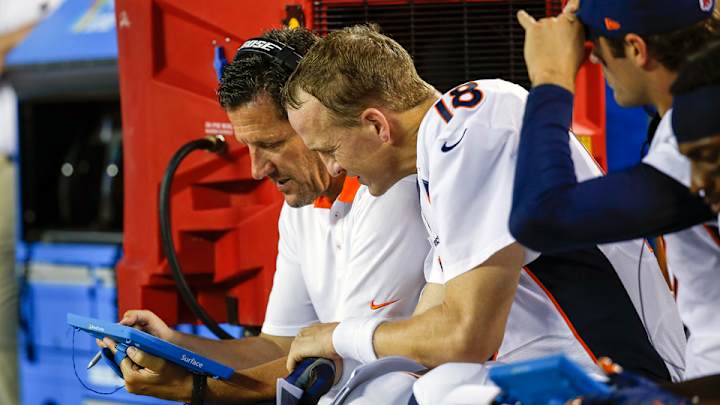
SAN FRANCISCO — It should come as no surprise that Bill Walsh saw how technology would affect the game he loved the most. Walsh was a consultant and speaker for Silicon Valley firms after his historic tenure as the 49ers’ head coach came to an end in 1989, and in 2001, he spoke with Bain & Company, a leading management consulting firm, to get advice on how to better scale the NFL draft. At that time, Walsh was the 49ers' Vice President and General Manager, and out of those talks with Bain came the hire of Paraag Marathe as the team's COO. It was a high-tech, Moneyball move. Long before computers were common, Walsh sought to run his team with a technological level of perfection. He often referred to the offenses he developed as a “machine,” and at their best, they certainly seemed like that.
In truth, football and computers have had an alliance for decades, but it's only recently that the partnership has been obvious. Today, the league strives to be as technically conversant as possible, but the start of this story was far more humble.
• The coming revolution in football strategy and game-planning
The Past: “I bow to the machine”
The Los Angeles Rams of the late 1950s had a pretty hefty front office: There was a PR guy named Pete Rozelle, there was general manager Tex Schramm, and there was a scout by the name of Gil Brandt. When Rozelle moved on to become NFL Commissioner in 1960, Schramm and Brandt took over the league’s newest team, the Dallas Cowboys. It was tough sledding at first, as it is for most expansion teams—Dallas posted an 0–11–1 mark in that first year and didn't have a winning season until 1966 (they finished 7–7 in ’65), but wouldn't have another losing one until 20 years later, in ’86. Schramm and Brandt left the franchise when Jerry Jones bought the team in 1989, but their legacy was secure: 18 playoff seasons, two Super Bowl wins, and an enormous roster of Hall-of-Famers from Bob Lilly to Roger Staubach to Tony Dorsett. How did they do it? Among other things, it was the franchise’s belief in the power of data that put them ahead of the pack for a very long time. And it all started when Schramm did some TV work in 1960.
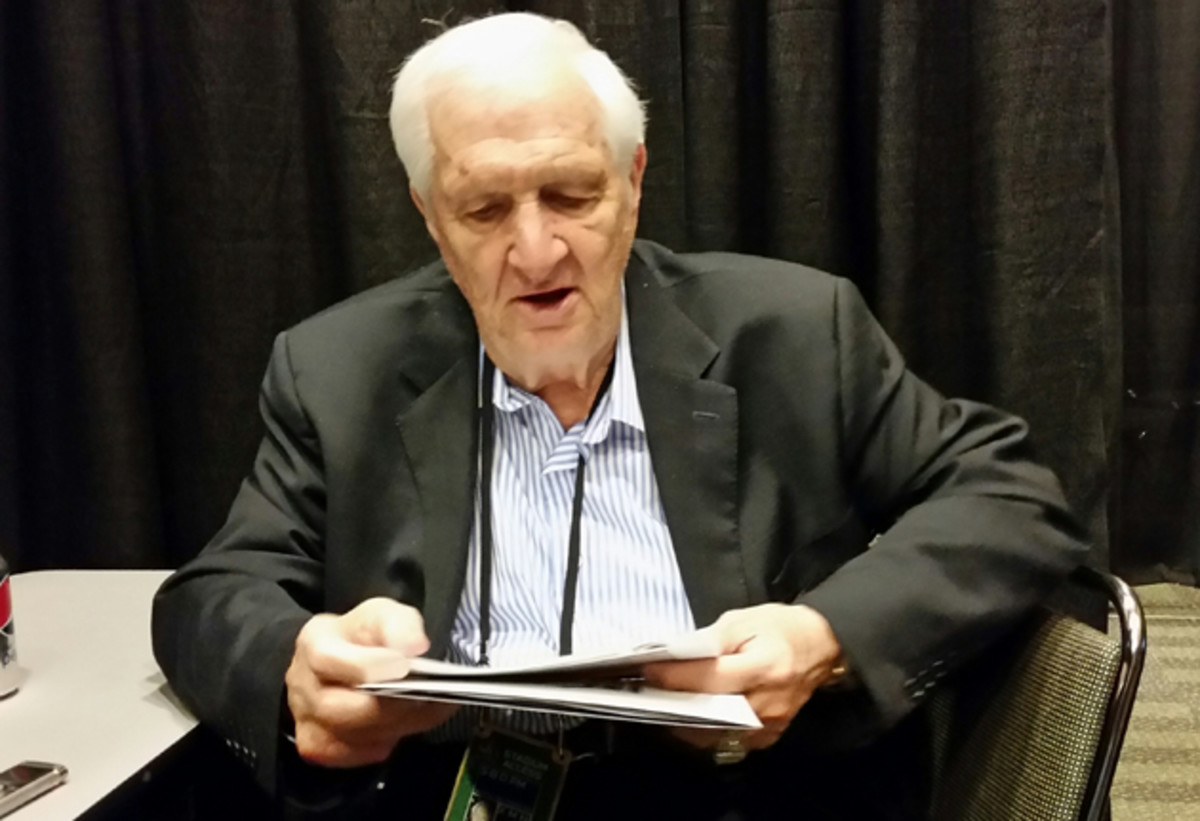
OK Computer: How computers will—and won't—change the NFL
How far are athletes willing to go to gain an edge on the gridiron?
The future of football equipment
None of it would be possible, however, without Squaw Valley, and IBM, and Schramm and Brandt who saw things in a whole new way.
The Present: Surfaces replace staples
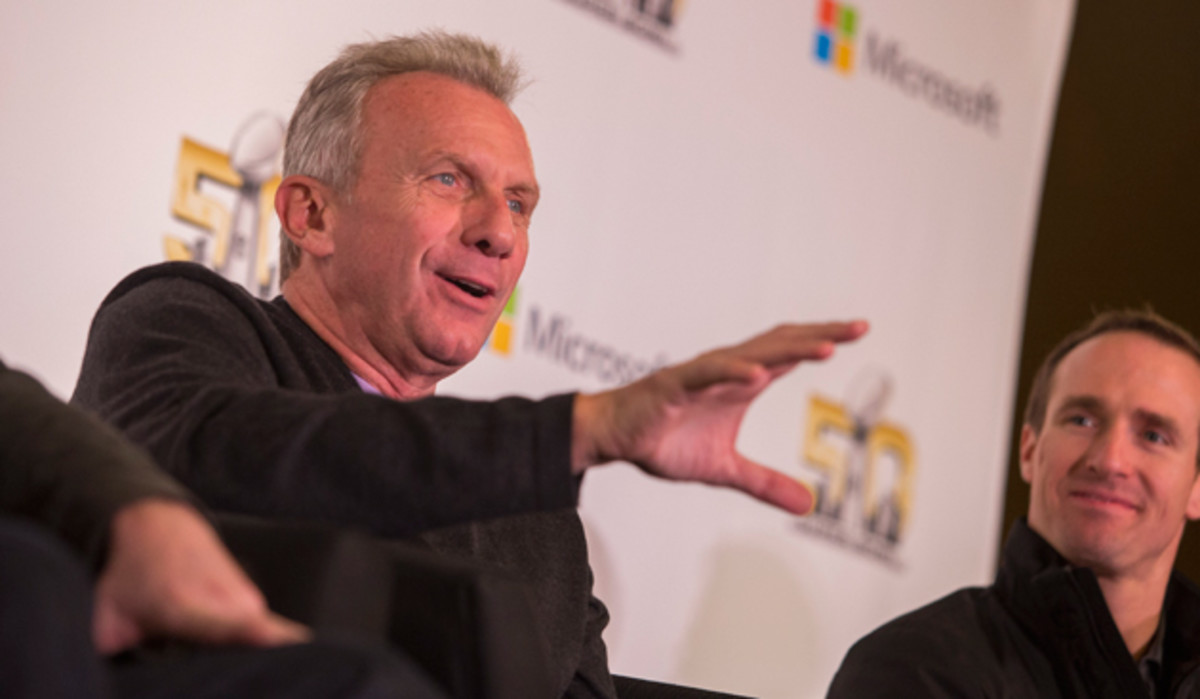
The process of getting information to players on the sidelines for in-game analysis wasn’t much different in 2012 than it was in 1982. That started to change when the NFL and Microsoft patterned to make the Surface the official tablet of the NFL in time for the 2014 season. I recently attended a Microsoft panel hosted by FOX’s Erin Andrews, with some heavy hitters on the stage.
“I’m Joe Montana, and I think I represent the past.”
“Drew Brees, the present.”
“I guess I’m in-between, huh? Reggie McKenzie, general manager, Oakland Raiders.”
That’s how the intros went at the Future of Football summit on Tuesday of Super Bowl week, at the Super Bowl 50 media center at Moscone Hall. In addition to Montana, Brees and McKenzie, there was NFL VP of Media Brian Rolapp and Mike Nichols from Microsoft. The purpose of the summit was to discuss the progress of the Surface in the NFL as it pertains to everything from sideline pictures to scouting.
For Montana, it was an exercise in “what if”—what if one of the most cerebral and successful quarterbacks in NFL history, guided as he was by super-genius Walsh, had all this technology? The mind reels. What if he could study a Surface while traveling like players do these days? What if access to information was as easy and fast when he was playing as it is now?
NFL Films embraces digital cameras to keep nostalgia alive
“We used to send the photos [overhead photos of in-game action], and they had these big metal clips, and there was a wire that came from the top. And the pictures slid down to our bench. Things have changed a lot, as fast as they get stuff on the sideline now. There are different views—it’s a lot better, I would imagine, especially for a quarterback; usually they’re the ones who watch the most film. I would have loved to spend more time [studying] on the plane rides, because we were on the plane a lot...it was refreshing not to have to do it, but it would have helped.”
More to the point was that unless you were like Montana’s one-time teammate Jack “Hacksaw” Reynolds and were such a film maven that you insisted on stocking up on film at the facility, there was nothing available to you. No internet, of course, so no All-22 on your laptop. You were in the dark unless you sought the light as much as you could.
Montana’s career went from 1979 through ’94. Brees’s NFL career began in 2001. And when Brees spoke about the advancements in technology in the space of those years, it was surprising (and somewhat appalling) how little had changed until very recently. Brees said that until three years ago, players were getting basically the same pictures thrown down from above. Only now, there were more of them, stapled together haphazardly, which made the logistics even worse.
“After you go on a 15-play drive, somebody hands you about 40 pages worth of stuff,” the Saints QB said. “The staple doesn't go all the way through, so the pictures are dangling, and one falls out, and you don't know where it goes. You look through two plays, and all of a sudden, you have to go back out on the field. You have no idea what just happened the series before.”
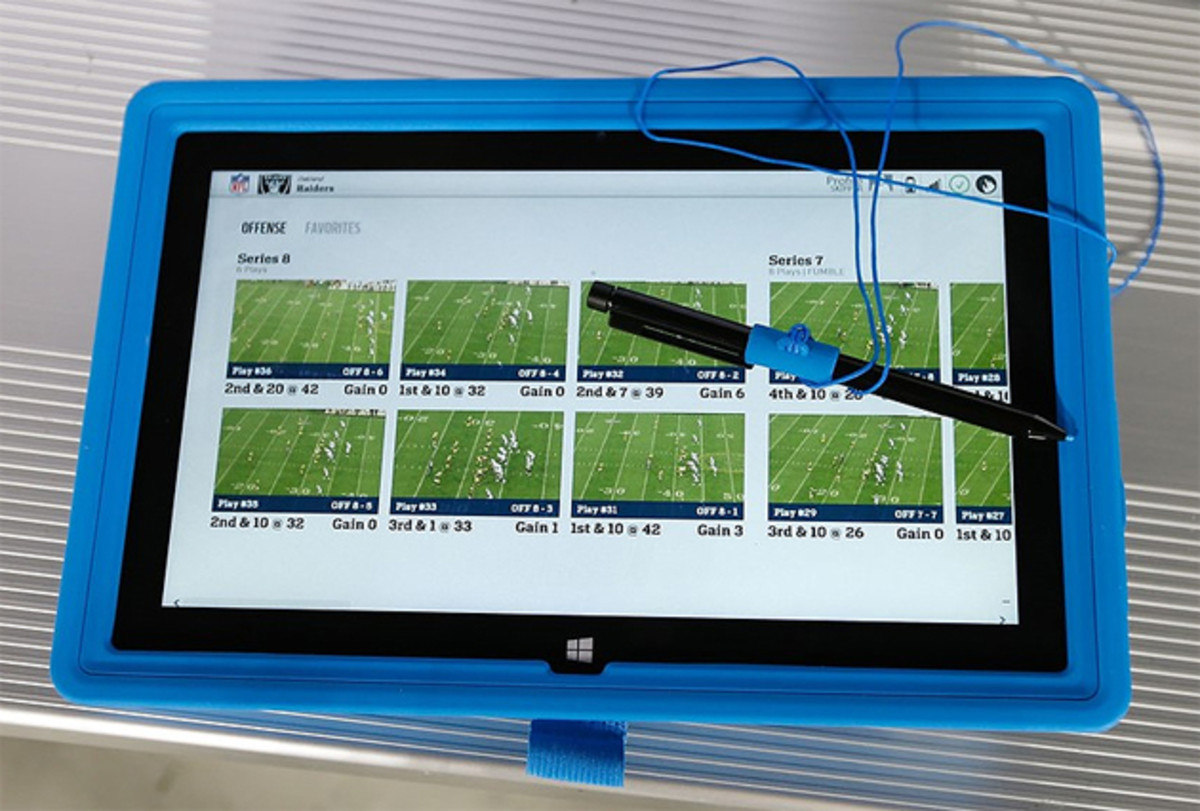
How will NFL improve concussion problem over the next 50 years?
Roundtable: What will media coverage of Super Bowl look like in 50 years?
From players to coaches to scouts to the top executives, the tech revolution started by Schramm and Brandt all those years ago has taken hold more firmly than ever. The fan experience is the next thing to undergo a major renovation.
The Future: Tabletop Football in a new way
It’s tough to express what this version of televised football is like, and how different it is, except to compare it to going from checkers to the real-life intergalactic creature chess at the cantina in Star Wars.
The Hololens, a 3-D holographic headset on the Windows 10 platform, is what Microsoft is betting on for its future, as much as Windows was the foundation to its establishment as a technological power, and the Xbox and Surface are the structures of today. CEO Satya Nadella has said that the Hololens experience is “like the first time you used Excel on a PC with a mouse and a keyboard,” and the clear hope is that it will reverse recent failures the company has had in hardware, from the Zune MP3 player to the Microsoft phone, that never really got off the ground. The Hololens is Microsoft’s chance to do what Apple has done so successfully throughout the Steve Jobs eras—control the hardware and software channels for devices the public deems indispensable.
At this time, Microsoft’s team is using the Hololens to try a lot of different things, from anatomy to space exploration to 3D rendering. Its best use as a consumer device down the road, however, may be how it changes the ways in which the public sees its favorite spectator sport.
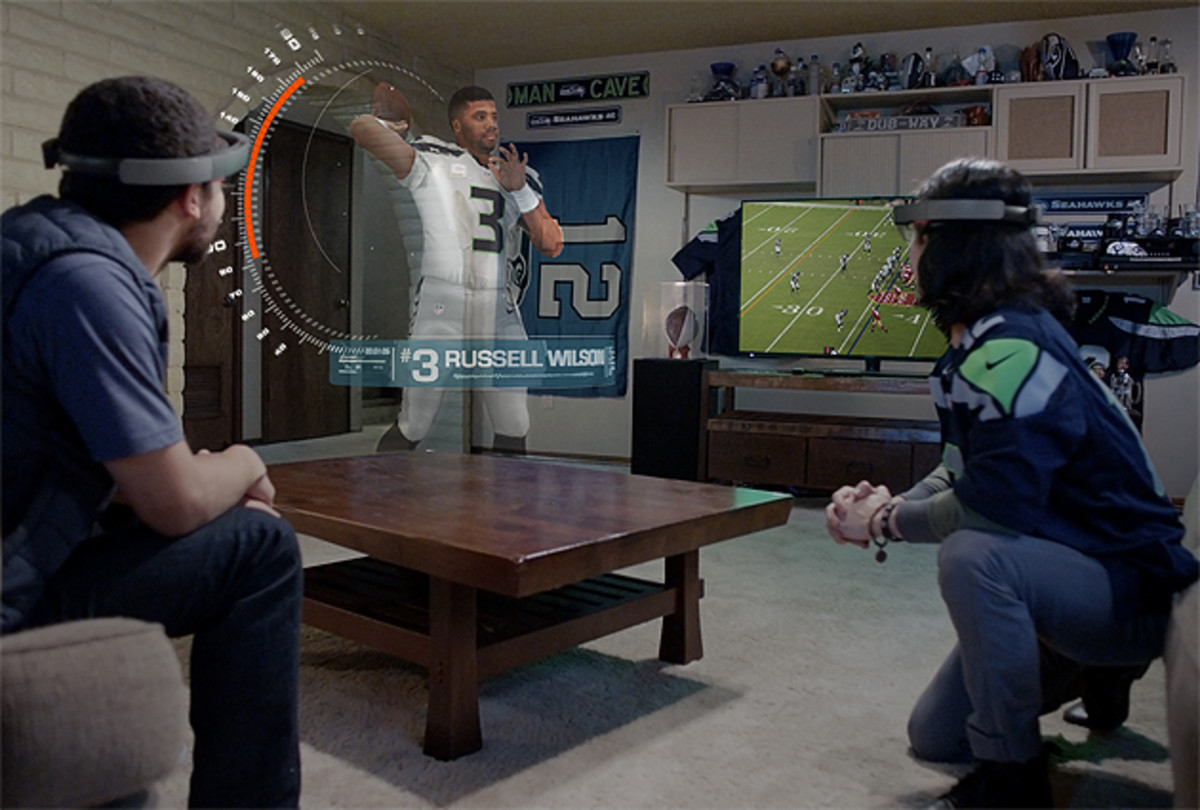
The day after the summit, I was on Bryant Street in San Francisco, in an old Korean auto parts shop that Microsoft had converted into a lofty showspace. There, me and a handful of other NFL dorks would get a taste of what the combination of the Hololens and NFL football could do. Among my colleagues were Sam Farmer of the L.A. Times and NFL RedZone host Scott Hanson (me to Hanson at one point: “Can you imagine RedZone with this? Oh my God!”)
After a quick briefing, we were escorted into a small room that's made to look like the standard Man Cave, with an HDTV plastered to the wall, and team paraphernalia everywhere. We sat on comfy leather couches and prepared to have our minds blown.
Examining the future of virtual reality and the impact it will have on football
You put the Hololens on your head, at a bit of an angle, and you want the lens mechanism itself resting slightly above your nose. When the operating system first comes on, it looks like a standard HD television screen. Then, the flyout screens show on either side for stats, fantasy information and other sidebars. Then, you can adjust the virtual screen to play at the size of a living room wall.
That’s all cool, but the real experience comes when the tabletop part of the experience comes in. Basically, this is the new-world version of the old tabletop football games of a generation ago, except that now, you’re seeing 3-D versions of the players in live game action. And the control over the viewer experience is otherworldly. I started to imagine the All-22 pieces I could do with this technology, and I had to go sit down for a minute.
Using your phone, you can alter the angle, zoom in and out, and make the experience whatever you'd like it to be. You can go over the top of the action just as easily as you can stand on a virtual sideline. It’s tough to express what this version of televised football is like, and how different it is, except to compare it to going from checkers to the real-life intergalactic creature chess at the cantina in Star Wars. When you see it, the way you watch the game will change forever. Yes, that sounds like bogus ad copy, but it's true.
So, you may ask, when do we get this stuff in our hands? At this time, the Hololens and the NFL are dating—the relationship isn’t quite ready for marriage. A Microsoft Hololens spokesperson told me that the idea with the first rollout is to get it into the hands of developers and expand what the device can do. At this point, Microsoft sees the Hololens as a glimmer of what could be, and there's a “Would it be cool if...?” aspect to the whole thing. The Developers’ Edition of the hardware starts at $3,000, and you have to apply for one.
All I got was a tantalizing taste, but I am now wondering, along with everyone else in this story, what more can be done.
